Articles
Diesel VS Electric
July 20, 2020
In recent years, I have had numerous conversations with customers considering going electric. Regardless if we are discussing concrete crushers or wood grinders, the answer is normally not cut and dry.
Advantages of Going Electric:
The most important part of your recycling equipment is your engine. In the extremely dusty environments that we work in, replacing a diesel engine with an electric motor is a huge way to save. Not only are electric motors more efficient and cost less money to run compared to equally sized diesel engines, electric motors are virtually trouble free. No more fuel, oil, and air filters, say goodbye to troublesome clutches and clogged radiators, and no more expensive engine repairs. Electric motors have considerably more torque than diesel engines too, so why doesn’t everyone change over to electric?
Disadvantages of Going Electric:
The largest disadvantage is that you are giving up portability. The majority of contractors are crushing or grinding off site at a variety of locations. Most of the sites do not have electricity so diesel/hydraulic is the only viable solution.
Another disadvantage is the major cost associated with getting electricity to your site. Not everyone has adequate electrical power, so you must calculate the cost of power lines, transformers, etc. In most instances, there is an average 3 to 4 year payback period. This may not sound bad, but most contractors find it difficult to come out of pocket for this investment.
The final disadvantage of going electric is resell value. Since the minority of machines are electric, the demand for electric is less, and thus resale values are lower.
Have you heard of Hybrid Machines?
In recent years manufacturers of crushers, grinders, and screeners have made hybrid powered machines. These machines have a generator on board and can be powered by either the generator or shore power. Why not buy this all of the time? It is the best option, but it is a very expensive one. Hybrid machines generally have higher price, and very few have trickled down to the used market. Even so, I do anticipate this being the wave of the future.
In Conclusion
It is my experience that most companies that have chosen to go electric are more established and have established a presence in the area that they are located. They have already owned portable machines and have decided to invest in infrastructure and electric recycling systems. Customers are bringing material to them to be recycled so being portable is not a concern. These select recycling companies are extremely smart and are normally extremely profitable. I do see more hybrid machines being introduced into the market as well since it is a great solution.
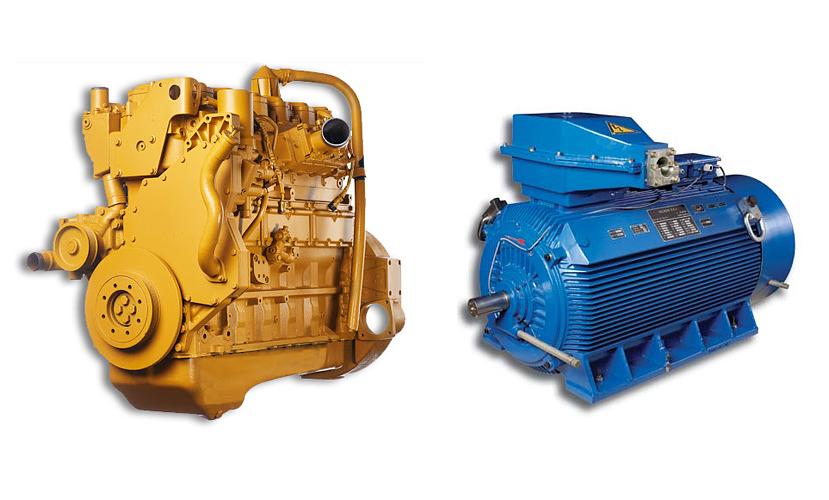
Crushers for Recycling and Rock: What Type of Crusher is Best?
May 26, 2020
In this article we are going to focus on types of crushers rather than manufacturer’s names; these being Jaw Crushers, Impact Crushers, Cone Crushers, and Shredders. To determine which of these crushing technologies is best for your application, we must first know the material that needs crushed and to what particle size.
Hard Rock: Many rock quarries crush hard rock. In these applications we highly recommend a jaw crusher as the primary crusher, which reduces the rock down to 3-4”, and then a cone crusher as the secondary crusher to further reduce down to the desired size. Often times the secondary crusher is not used and the primary crusher conveys into a screening plant which separates the material into 3 products.
Concrete / Concrete Block / Brick: For this material we normally recommend a jaw crusher, impact crusher or a recycling shredder; however, other variables come into play to determine which is best. Is dust an issue? Am I wanting a finer or coarser material? Is there a great deal of rebar in the material?
ASPHALT: The most popular type for crushing asphalt is the impact crusher. The wear on the machine is significant, but it yields the most production. I personally like the Shredder for this application as the cost per ton is considerably less and, compared to an impact crusher of similar cost, and the shredder will accept larger pieces meaning less prep time. There are many shredder manufacturers on the market, but only one that we recommend for recycling concrete, block, brick, and asphalt; the CAMS Shredder, as it is specifically designed for such material. The CAMS Shredder can also shred extremely dirty or even muddy concrete with no issues. If you have any questions or interest in a machine, feel free to call us at GrinderCrusherScreen to answer your crushing equipment questions.

See Us at the 2020 ConExpo Show
February 12, 2020
GrinderCrusherScreen Inc. is proud to announce that we will be exhibiting at Con Expo 2020 (March 10-14 in Las Vegas). Come visit us at booth C31061 which is located inside Central Hall just 2 rows behind Astec Industries.
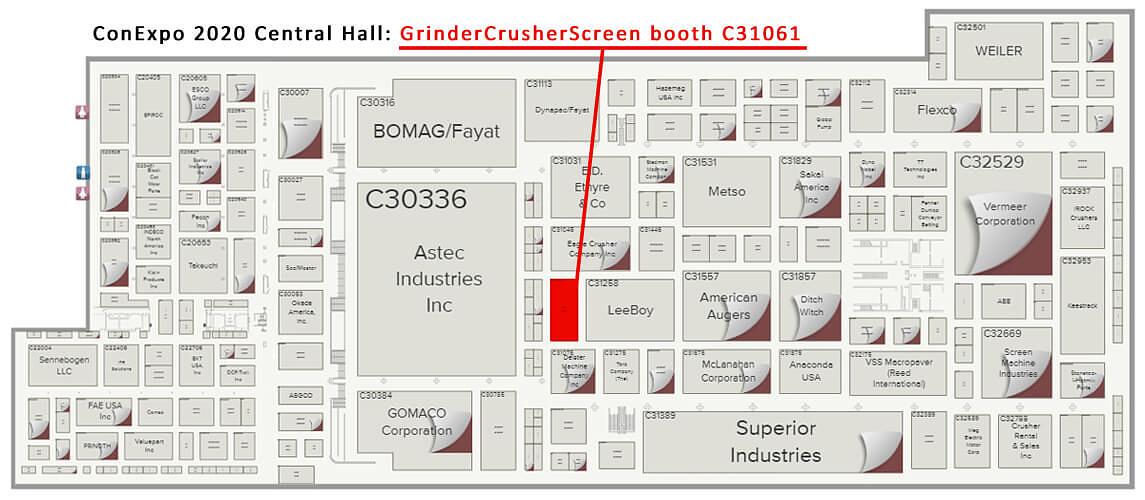
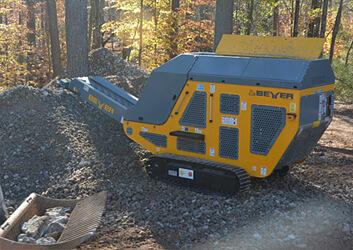
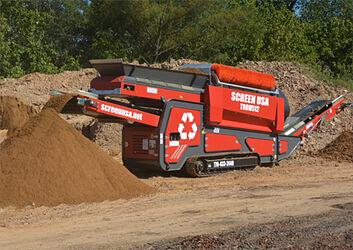
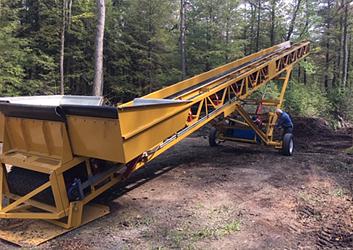
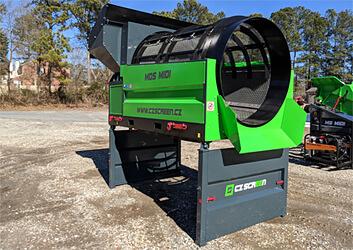
AR Plate, T1, or Hardox?
December 11, 2019
If I had a dollar for every time this question arises, I would be retired on an island somewhere in the Pacific with an umbrella drink in my hand. The answer is simple though, all the above can be good but we must determine which is best for your operation. How do we do that you ask?
To determine which steel screen is best for your particular application, we must be knowledgeable of the different alloys of steel and what they are used for. This will help you in your entire operation. Here is a list of the typical types of steel we use in our industry:
A36: This is a low carbon steel (approx. 150 Brinell) used for structural uses. This steel is not heat treated nor hardened and can be formed easily. Most steel fabricators typically carry A36 steel in stock.
What is Brinell and why is it important? Good question! Brinell is simply the measurement of hardness of the steel. It is important to know the harder the steel, the more brittle it becomes. Our goal is to balance hardness (longer wear) against brittleness to decide our best solution for your particular grinding needs.
4140: The 4140 is a steel alloy that is heat treated and tempered. The Brinell level on this alloy is roughly 250-300. With this material being easily machined, 4140 is commonly used in most if not all shafts for your grinders and conveyors. This material is also more expensive than A36
AR Plate: The “AR” stands for Abrasive Resistant Steel. This steel is harder than the above two alloys as it has more carbon. Carbon is the key. The more carbon, the harder the material.
Why not just buy the hardest material with the most carbon and use it for everything is a common question? The answer is that contrary to popular belief as steel gets harder, it becomes more brittle. There is a point to where it gets too brittle and will crack and break. Remember: When making screens, we must roll them / bump brake to a particular radius so the harder the material the more difficult it is to bend / roll. If the material gets too hard, the ends will crack and these cracks will continue to worsen causing structural failure to your grinder screen.
“AR” Plate comes in a variety of Brinell Hardiness’. Here are the common ones we use in our industry:
AR400: 360-440 BHN This material is commonly used for bed liners, wheel loader buckets, hopper liners, and is commonly used for grinder screens.
AR450: 430-480 BHN This material is slightly harder than AR400 and is also a popular material to make grinder screens.
AR500: 460-544 BHN Although this material is the hardest of the above 3 and will wear long, the steel is brittle and is not recommended for grinders. This material is extremely difficult to roll and will tear / rip due to its brittleness.
T1: This commonly known steel material is on the other spectrum as to hardness from the above. T1 has a Brinell hardness of 300. This material is heat treated and commonly used for screens.
HARDOX: This can be seen advertised everywhere and complicates the choice for many. Hardox is not an alloy of steel but a company in Sweden that makes a high quality AR plate. Hardox makes Hardox 400, Hardox 450, and Hardox 500 so the steel has the same basic characteristics as it counterpart AR Steel.
So what have we learned?? Use A36 for general steel fabrication, 4140 for machining, T1, AR400, AR450, Hardox 400, and Hardox 450 for screens. Now answer the question. What is the best material to use in manufacturing wood grinder screens?
The answer depends on the size of your wood grinder and the material you run through it. I recommend T1 steel for high horse power grinders (850 HP – 1200 HP) with 3” and larger openings if there are potential contaminants in the material. The screen will flex slightly as the contaminants bounce off of it and is the best scenario for a difficult application.
For high horsepower grinders being used as a secondary grinder, I would use either AR400 / Hardox 400 or AR450 / Hardox 450. This will wear noticeably longer than the T1 assuming there are no contaminants in the material. For smaller HP grinders, I recommend AR400 / Hardox 400 or AR450 / Hardox 450. To narrow this down even finer, when do I use AR400 / Hardox 400 and when use AR450 / Hardox 450? This decision is not easy to make. The higher the carbon content the more expensive the screen will cost. It all relies on the abrasiveness of your material. If your wood is extremely abrasive, then it is worth the higher expense for a higher carbon content screen. If your wood has average abrasiveness, then you will most likely select the least expensive screen which is the AR400 / Hardox 400 screen.
After being in this industry for nearly 40 years, most customers want to know “How much for the screen??” and rarely ask what the screen is made of. Many customers call and say one type of screen is far superior to other screens on the market, but yet what are they comparing them to? In my career I have heard dozens of times that after market companies have sold Mild Steel screens representing them as AR and T1 screens. (It is hard to differentiate from the two without a trained eye.) Of course they were less money and did not last long. You can buy T1 and AR plate screens and depending on the mill it was made will determine which is better. A great deal of steel plate comes from China. Is this plate as consistent as steel plate made in Sweden or the US or Canada? The answer is NO.
GrinderCrusherScreen manufactures screens in T1, AR-400, AR450, and Hardox as well. We have facilities in the east coast, west coast, and in the Midwest to minimize the freight costs, and we look forward to answering any other questions when you need a grinder screen.
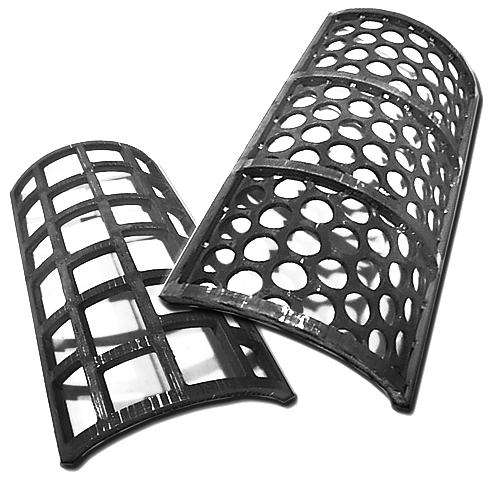
IRS 179 Write-Offs in Play
November 13, 2019
IR-2018-257, December 21, 2018
WASHINGTON — The Internal Revenue Service issued Revenue Procedure 2019-08 today to provide guidance on deducting expenses under Section 179(a) and on deducting depreciation under Section 168(g). These rules, as amended by the Tax Cuts and Jobs Act (TCJA) in December 2017, generally apply to tax years beginning after 2017.
Section 179 allows taxpayers to deduct the cost of certain property as an expense when the property is placed in service. For tax years beginning after 2017, the TCJA increased the maximum Section 179 expense deduction from $500,000 to $1 million. The phase-out limit increased from $2 million to $2.5 million. These amounts are indexed for inflation for tax years beginning after 2018.
The Section 179 deduction applies to tangible personal property such as machinery and equipment purchased for use in a trade or business, and if the taxpayer elects, qualified real property. The TCJA amended the definition of qualified real property to mean qualified improvement property and some improvements to nonresidential real property, such as roofs; heating, ventilation and air-conditioning property; fire protection and alarm systems; and security systems. Revenue Procedure 2019-08 explains how taxpayers can elect to treat qualified real property as Section 179 property.
For tax years beginning after 2017, the TCJA also expanded the businesses that must use the alternative depreciation system under Section 168(g) (ADS). A farming business can elect out of the interest deduction limit of Section 163(j). If it does, the business must use the ADS for property with a recovery period of 10 years or more. A real property trade or business can also elect out of the Section 163(j) limit. If it does, the business must use the ADS for nonresidential real property, residential rental property, and qualified improvement property. Revenue Procedure 2019-08 explains how electing real property trades or businesses or farming businesses change to the ADS for property placed in service before 2018, and provides that it is not a change in accounting method.
Finally, the TCJA changed the ADS recovery period of residential rental property. For property placed in service after 2017, the recovery period is 30 years. It was formerly 40 years. Revenue Procedure 2019-08 provides an optional depreciation table for residential rental property depreciated under the ADS with a 30-year recovery period.
Businesses can find updates on TCJA implementation on the Tax Reform page of IRS.gov.

The New GrinderCrusherScreen
October 23, 2019
GrinderCrusherScreen Inc. is excited to announce the launch of our new and improved website, now live, with a fresh new look. It has been redesigned with you, our customer, in mind. A vast number of improvements have been made so navigating through the site is simple, and allows you to see the wide variety of Recycling Equipment and Grinder Wear Parts that we offer with ease. Please visit GrinderCrusherScreen.com to see what all of the fuss is about.
In addition to “used” equipment, GrinderCrusherScreen Inc. also sells “New” equipment and is the exclusive dealer for numerous manufacturers for North and South America such as Beyer Crushers and Screeners, CZ Trommels and Box Screeners, Cams Concrete and Asphalt Shredders, Screen USA Trommel Screens and Track Conveyors, and GCS Density Separators, Blenders, and Conveyors.
If you are in need of grinder wear parts, GrinderCrusherScreen is the Home of the “Hammerhead”TM Wood Grinder Tips. These replacement tips, which are offered for most wood grinders, have twice the carbide of OEM and aftermarket tips, so they last twice as long. Words are cheap though, so buy just half a set and compared them side by side to your current tips. We earn our business every day by proving our superiority. GrinderCrusherScreen also offers replacement screens for wood grinders, trommel screens, and flat deck screens. In addition, we are now selling all CEC Replacement Crusher and Screen Parts as they are no longer in business.
We look forward to your visit to our new site, and as always, our seasoned salesforce is available to answer your questions.

